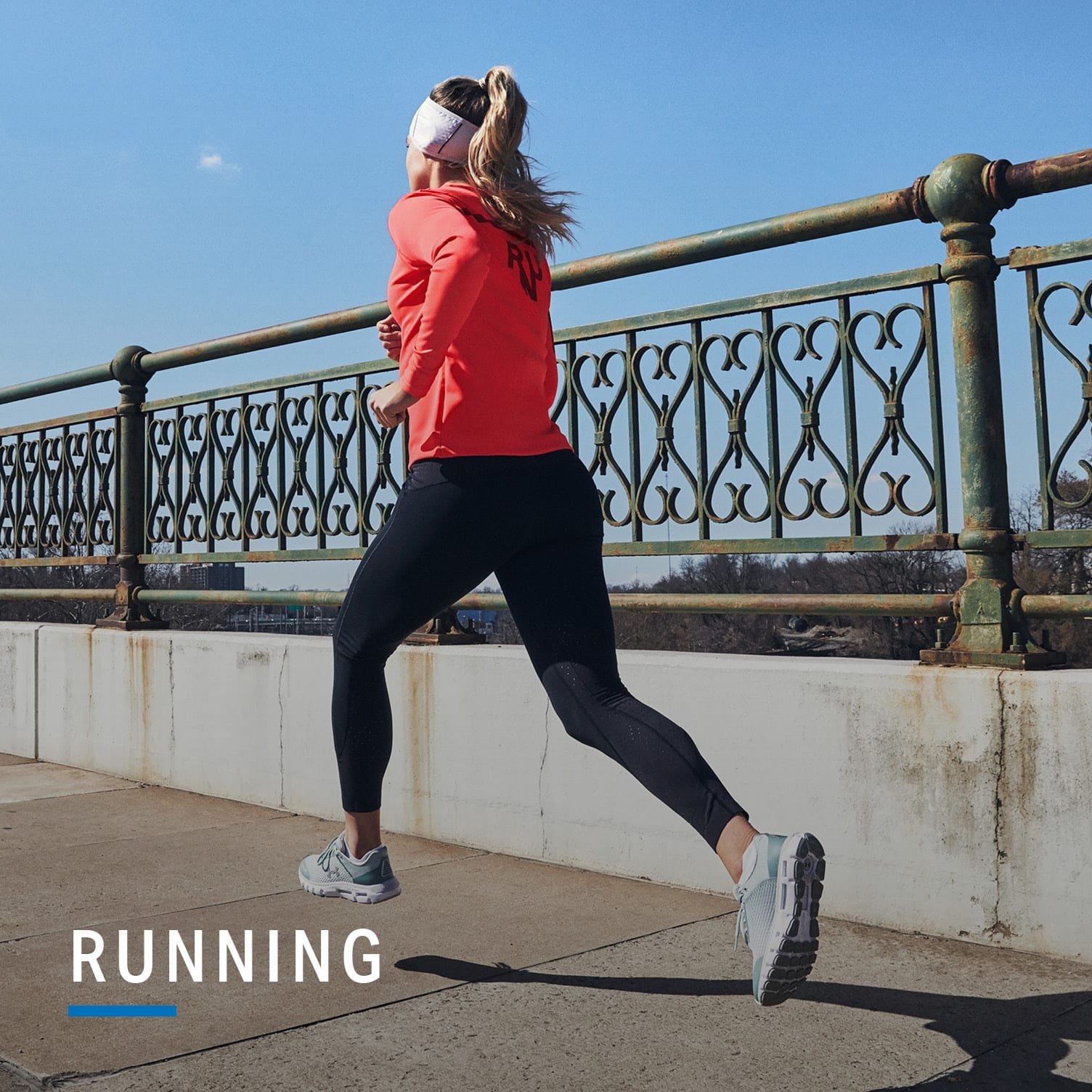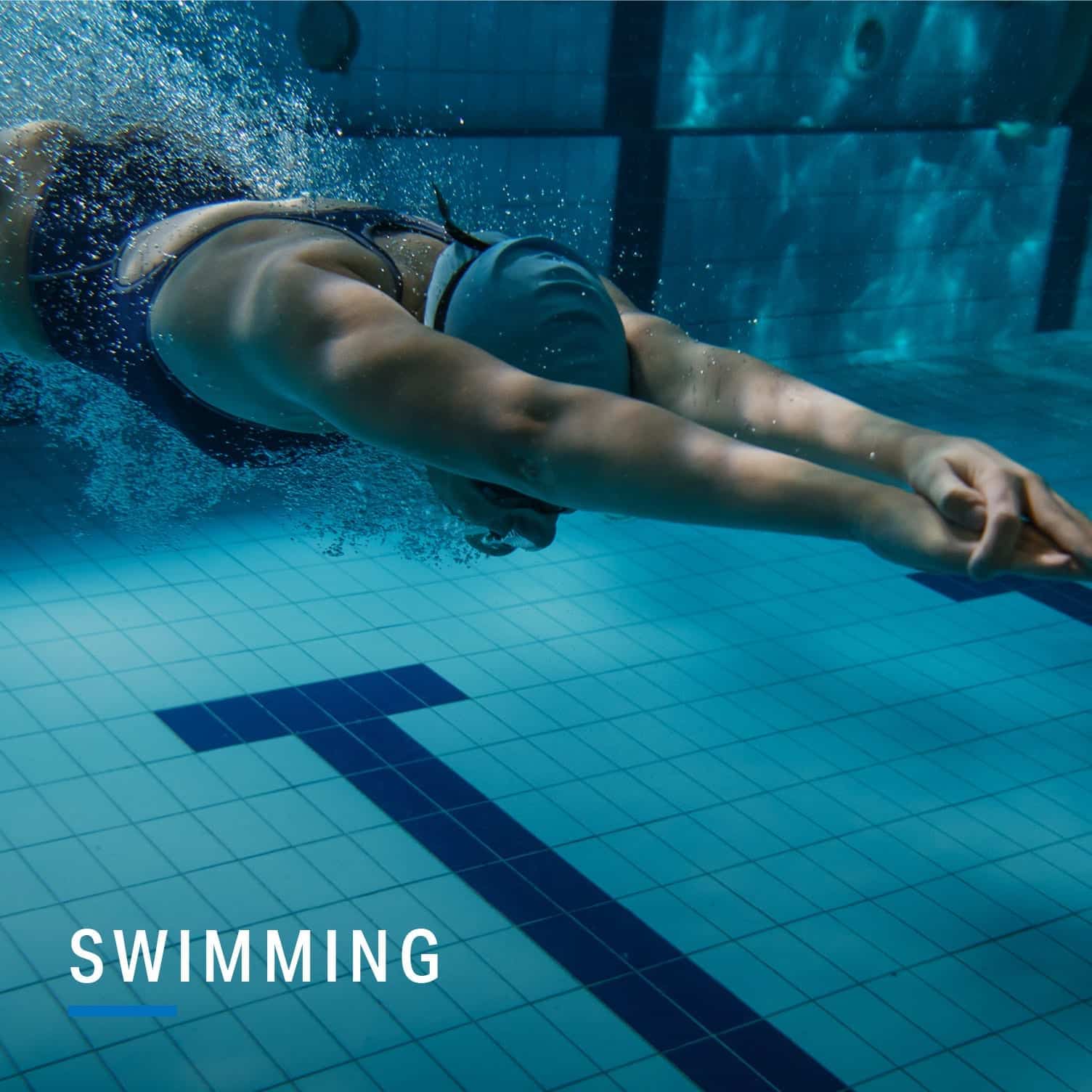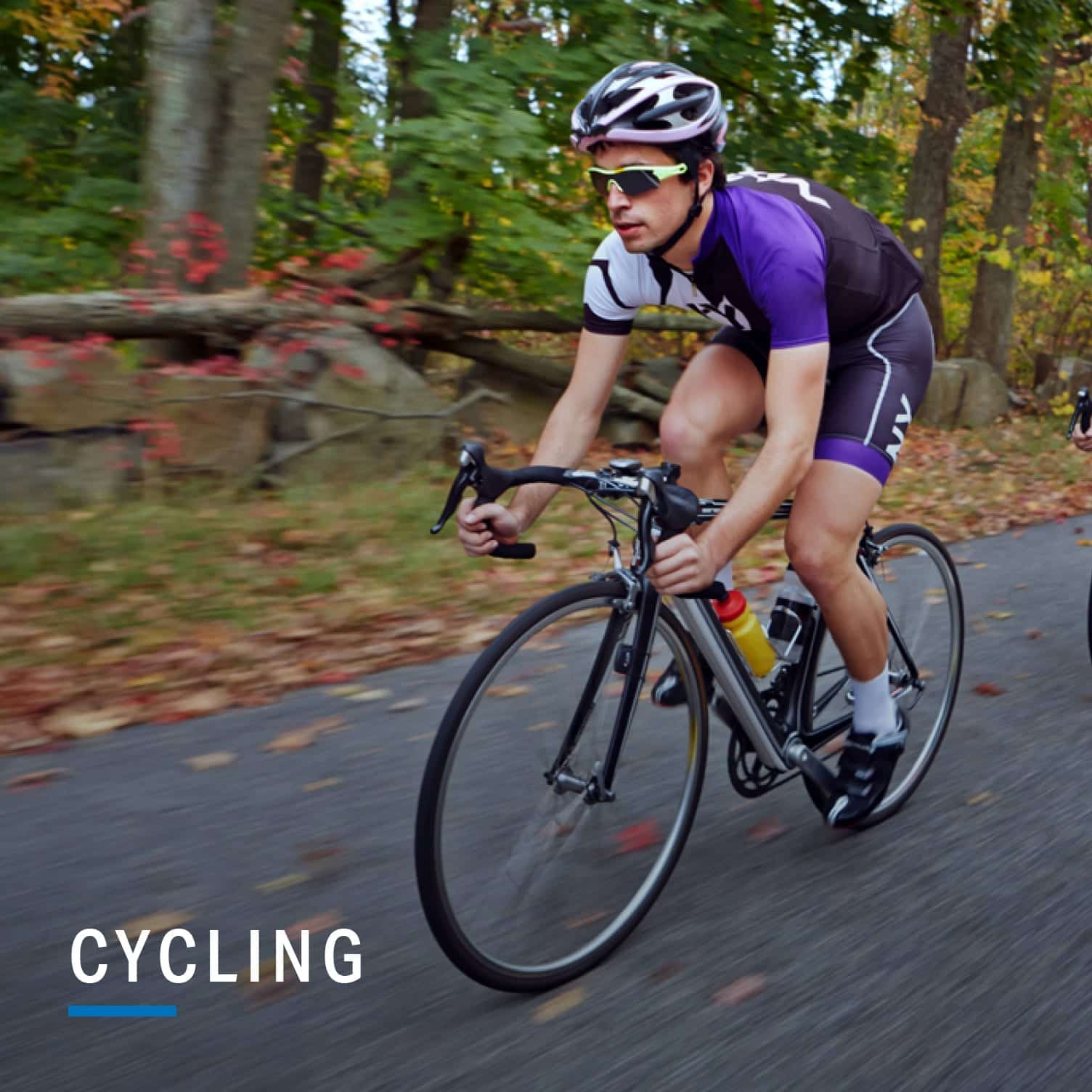In the world of traditional cardio, running, swimming and cycling reign supreme. They all build cardiovascular fitness, but each activity offers unique benefits. Surely, one must be better than the others, right?
Actually, the best cardio workout is the one that works for you. And the best cardio workout for you depends on your goals and experience level.
RUNNING VERSUS CYCLING VERSUS SWIMMING
Here, we break down the benefits and drawbacks of each so you can decide which is a better workout for you.

Running is the most accessible of the three activities, as you only need shoes, apparel and space to run. Plus, it may be more intuitive than equipment-based workouts, like cycling, or water-based activities like swimming. This may help explain why it’s the third most popular form of exercise (walking and strength training ranked first and second, respectively). That, and the fact you can burn a decent amount of calories in a single session, make running a great choice for people looking for a simple, efficient cardio workout.
One drawback to running, however, is it places a lot of stress on the joints, which may lead to pain and injury over time. “A lot of my athletes do minimal running because it’s so hard on the joints,” says Tamera Finley, personal trainer and triathlon coach with Life Time in Las Vegas, Nevada. The knees are a common problem spot for many runners.
That said, running-related pains and injuries probably have less to do with the act of running, and more to do with increasing mileage too quickly, running with muscle weakness and bad form, switching terrain and/or changing up your running shoes.
For example, a 2015 review in PLOS One reveals that previous injury and use of orthotics and shoe inserts were associated with an increased risk of running injuries. Women, in particular, had a greater risk of injury if they ran 30–39 miles per week, wore their running shoes for 4–6 months, participated in a marathon and ran on a concrete surface. Meanwhile, men had a greater risk of injury if they ran 20–29 miles per week, were restarting their running routine and had a running history of 0–2 years. (Learn how to keep your knees healthy while you run.)

“Swimming is my favorite, as it is a full-body workout with no impact,” says Doris Thews, senior vice president of fitness and innovation for VASA Fitness and 2019 IDEA Fitness Instructor of the Year.
“So much fitness can come from swimming, with minimal injury risk,” Finley agrees.
Swimming offers a great cardio workout, while also strengthening your shoulders, arms, back, abs, glutes and hamstrings. Depending on what stroke you choose, you can emphasize different muscles. The freestyle stroke is a popular option and gives your arms, chest, glutes, hamstrings and quadriceps extra attention. The backstroke is another popular pick and shines a spotlight on your back, glutes, quads and hamstrings.
If you already experience joint pain and stiffness, swimming may help ease your symptoms. According to a 2016 study, adults with osteoarthritis (the “wear and tear” form of arthritis) saw significant improvements in joint pain and stiffness after three just months of swimming for 45 minutes three days per week.
A major drawback to swimming, however, is it’s less accessible than running or cycling. For one thing, it’s not as easy to learn if you’re a beginner. And even if you’re not a beginner, you may still struggle with your swimming form and breathing technique. “Most people don’t come into triathlons as collegiate swimmers, so swimming is usually the thing they’re worst at,” Finley says.
Not to mention, you need access to a pool, lake or ocean in order to swim, which may make it challenging to get in a workout.

Cycling builds aerobic fitness, as well as lower-body strength. You use your glutes, quads and calves during the power phase (i.e., the downstroke), and the hamstrings and hip flexors during the recovery phase (i.e., the backstroke).
Like swimming, cycling is also low-impact, making it a great option for people who can’t run without joint pain. In fact, cycling was just as effective as swimming in easing joint pain and stiffness in people with osteoarthritis, according to a 2016 study.
Cycling may be a bit more accessible than swimming as you can do it at the gym or outside and has the added bonus of offering an alternative means of transportation that’s healthier and cheaper than driving a car or using public transportation.
BUT, WHICH BURNS THE MOST CALORIES?
If you’re exercising for fat loss, you’ll probably want to pick the cardio activity that burns the most calories in a single workout.
So, between running, cycling and swimming, which one burns the most calories?
On paper, running appears to be the winner. According to Harvard Health, cycling outdoors at 12–13.9 miles per hour (mph), running 5 mph and swimming the backstroke all burn roughly 298 calories in 30 minutes (for a person weighing 155 pounds). But according to the Compendium of Physical Activities, an online resource that provides the metabolic equivalents (a common way exercise scientists estimate energy expenditure) for a wide variety of physical activities, cycling at 12–13.9 mph is 8.0 METs, running 5 mph is 8.3 METs and swimming the backstroke recreationally is 4.8 METs. More METs equals more calories burned.
In other words, running appears to burn the most calories, followed by cycling, followed by swimming.
That said, the number of calories you burn depends in large part on the intensity (i.e., how hard you’re working) and duration of the workout. If you swim freestyle laps quickly and intensely, the METs increase to 9.8. If you do a combination of jogging and walking, where the jogging component equals less than 10 minutes, the METs lower to 6.0. Depending on your background and fitness level, you may be able to swim laps or cycle at a much higher intensity than you can run, and therefore burn more calories in the process.
However, the best exercise for fat loss is ultimately the one you enjoy. Most of us are more likely to stick to a workout routine if we don’t dread it.
Let’s be clear: Fat loss is about more than exercise. How much fat you’re able to lose — and how quickly — depends on a variety of factors, including nutrition, sleep, stress, genetics, sex and lean body mass (i.e., how much muscle you have).
Exercise does play a role, however. Physical activity — which includes exercise, yardwork, manual labor and even shivering and fidgeting — accounts for roughly 15–30% of the total calories you burn in a day. If you can maximize the number of calories you burn during and/or after exercise, you can create a caloric deficit, which may lead to fat loss if paired with mindful nutrition. “Fat loss is 75% nutrition, 25% exercise,” Finley says. (You may have also heard it’s 80/20, but you get the idea.)
THE BOTTOM LINE
You’ll have to think about what you’re looking for from your workouts, as well as what qualifies as a “great workout” to you: Is it the workout that burns the most calories? The one that’s easiest on your joints? The one that works the most muscle groups? Once you figure out what you want, you can pick the best cardio workout for you.
Or, eliminate the debate and do them all!




